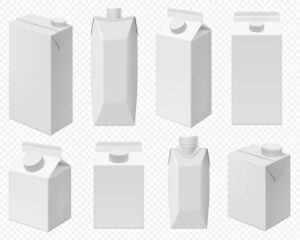Explores alcohol packaging market innovations in sustainable materials, recycling, renewable resources, and green manufacturing driving global transformation toward eco-efficient, climate-friendly beverage packaging systems.
Introduction
The alcohol packaging market innovations have evolved far beyond aesthetic appeal and brand identity; they now stand as a testament to environmental consciousness and technological advancement. As sustainability takes center stage in global business strategies, alcohol manufacturers and packaging producers are reimagining the entire lifecycle of bottles, cans, and labels. The modern alcohol packaging market is experiencing a paradigm shift driven by sustainable material science, green chemistry, and eco-efficient production systems. These innovations reflect a new era where environmental preservation, product protection, and design sophistication converge, redefining how the world perceives packaging in the alcoholic beverage industry.
The Green Transformation in Packaging Philosophy
The shift toward eco-responsibility has become the defining force behind alcohol packaging market innovations. Traditionally, packaging served to contain and protect the product; today, it also serves to protect the planet. Companies are adopting sustainability as both a moral and strategic imperative, replacing resource-intensive materials with renewable, biodegradable, and recyclable alternatives. The alcohol packaging market has recognized that eco-conscious design not only reduces environmental footprint but also enhances consumer loyalty. This transformation is no longer a marketing trend—it is a foundational change in the philosophy of production and consumption.
Material Science Driving Sustainable Innovation
At the heart of alcohol packaging market innovations lies the rise of advanced material science. Researchers and engineers are continuously experimenting with bio-based plastics, compostable films, and post-consumer recycled glass to minimize waste. One major breakthrough is the use of cellulose-based biopolymers that decompose naturally while retaining durability. Similarly, lightweight glass innovations reduce carbon emissions associated with transportation. The alcohol packaging market is embracing these scientific advancements to strike a balance between strength, sustainability, and style. Material innovation has thus become the backbone of eco-conscious evolution in modern alcohol packaging.
Recycled and Circular Economy Practices
Circular economy principles are reshaping the alcohol packaging market as manufacturers commit to closing the loop in production. Recycled glass, paperboard, and metal are being reintroduced into the packaging stream, significantly reducing virgin material dependency. Several global breweries and distilleries are implementing bottle-return systems that encourage reuse and regeneration. The alcohol packaging market is thriving under these circular models, ensuring that materials are continuously repurposed rather than discarded. By integrating recyclability with innovative design, the industry demonstrates how sustainability and profitability can coexist in harmony.
Plant-Based and Renewable Material Innovations
Plant-derived packaging is redefining the future of the alcohol packaging market. Bioplastics made from corn starch, sugarcane, or algae have emerged as viable alternatives to petroleum-based plastics. Even labels and adhesives are undergoing green transformations, using water-based inks and biodegradable sealants. These bio-material innovations reflect the industry’s deep commitment to environmental preservation. As the alcohol packaging market continues to explore renewable sources, it opens the door for fully compostable bottles and carbon-negative production systems. This move from synthetic to organic materials represents one of the most impactful innovation waves in packaging history.
Energy Efficiency in Manufacturing
Beyond materials, manufacturing processes are also becoming greener in the alcohol packaging market. Energy-efficient furnaces, solar-powered facilities, and closed-loop water systems are reducing the environmental cost of production. Companies are investing in carbon-neutral factories that utilize automation and waste heat recovery systems. These innovations not only reduce emissions but also lower production costs in the long term. The alcohol packaging market’s alignment with green manufacturing ensures that sustainability is integrated into every stage—from raw material processing to final product assembly—making the entire value chain cleaner and more efficient.
Minimalism and Resource Optimization
Minimalist design philosophies are transforming the visual and material structure of packaging. In the alcohol packaging market, minimalism is more than an aesthetic trend—it’s an environmental strategy. Brands are reducing excess layers, unnecessary coatings, and oversized boxes to conserve resources. Sleek, lightweight designs minimize material consumption while maintaining elegance. This conscious approach ensures that the alcohol packaging market aligns with sustainability goals without sacrificing brand distinctiveness. Through optimization and restraint, minimalism proves that less truly can be more when executed with purpose and precision.
Sustainable Inks and Coatings
Printing technology has also evolved as part of alcohol packaging market innovations. Traditional solvent-based inks are being replaced with water-based, UV-curable, and soy-based alternatives. These inks emit fewer volatile compounds, ensuring safer production and improved recyclability. Moreover, coatings are shifting toward biodegradable and compostable formulations that provide protection without pollution. The alcohol packaging market’s transition to sustainable inks and coatings reflects a deeper understanding of the environmental impact of every microscopic layer applied to bottles, labels, and caps.
Reusable and Refillable Systems
Reusable packaging models are rapidly gaining traction across the alcohol packaging market. Leading breweries and distilleries are introducing standardized refillable glass bottles that can withstand multiple uses without compromising quality. This innovation reduces overall material demand and waste generation. Some brands have even integrated smart refill stations that track consumer participation through digital incentives. By making reuse convenient and rewarding, the alcohol packaging market is encouraging sustainable behavior at scale. These initiatives not only preserve resources but also strengthen long-term brand-consumer relationships built on shared ecological values.
Supply Chain Sustainability and Lifecycle Assessment
To fully measure and enhance sustainability, the alcohol packaging market is adopting lifecycle assessment (LCA) tools that evaluate environmental impact from production to disposal. Data-driven insights help manufacturers identify inefficiencies and prioritize greener alternatives. Sustainable logistics—such as optimized transport routes and eco-packaging for e-commerce—further reduce carbon emissions. The alcohol packaging market is moving toward complete transparency, allowing consumers to understand the ecological footprint of every bottle they purchase. This accountability-driven approach is strengthening trust and setting new industry standards for responsible production.
Collaboration Between Innovation and Regulation
Governments and environmental agencies are actively shaping the evolution of the alcohol packaging market by promoting sustainable innovation through regulatory frameworks and incentives. Packaging waste directives, extended producer responsibility (EPR) schemes, and green certification programs encourage companies to adopt eco-friendly materials and reduce waste generation. Collaborations between policymakers, researchers, and industry players ensure that sustainability is pursued not just for compliance but as a shared vision for a greener future. The alcohol packaging market thus represents a fusion of innovation, governance, and global responsibility.
Future Outlook and Next-Generation Sustainability
The future of the alcohol packaging market lies in continuous innovation through scientific exploration and environmental ethics. Next-generation sustainable materials such as mycelium-based foams, carbon-capturing glass, and water-soluble films will further redefine eco-packaging. Artificial intelligence will optimize production efficiency and waste reduction. The industry’s commitment to sustainability is transforming packaging into a regenerative system—one that gives back more than it consumes. The alcohol packaging market is poised to lead the global transition toward climate-conscious manufacturing, circular economies, and ecological stewardship.
Conclusion
The alcohol packaging market innovations in sustainable material science and green manufacturing are not merely trends—they are the foundation of a responsible future. Through renewable materials, recycled systems, and energy-efficient production, the industry is building a greener, smarter world. Each innovation reflects an unwavering commitment to protect both brand integrity and planetary health. The alcohol packaging market continues to inspire industries worldwide by proving that sustainability and profitability can flourish together when creativity and conscience unite.


